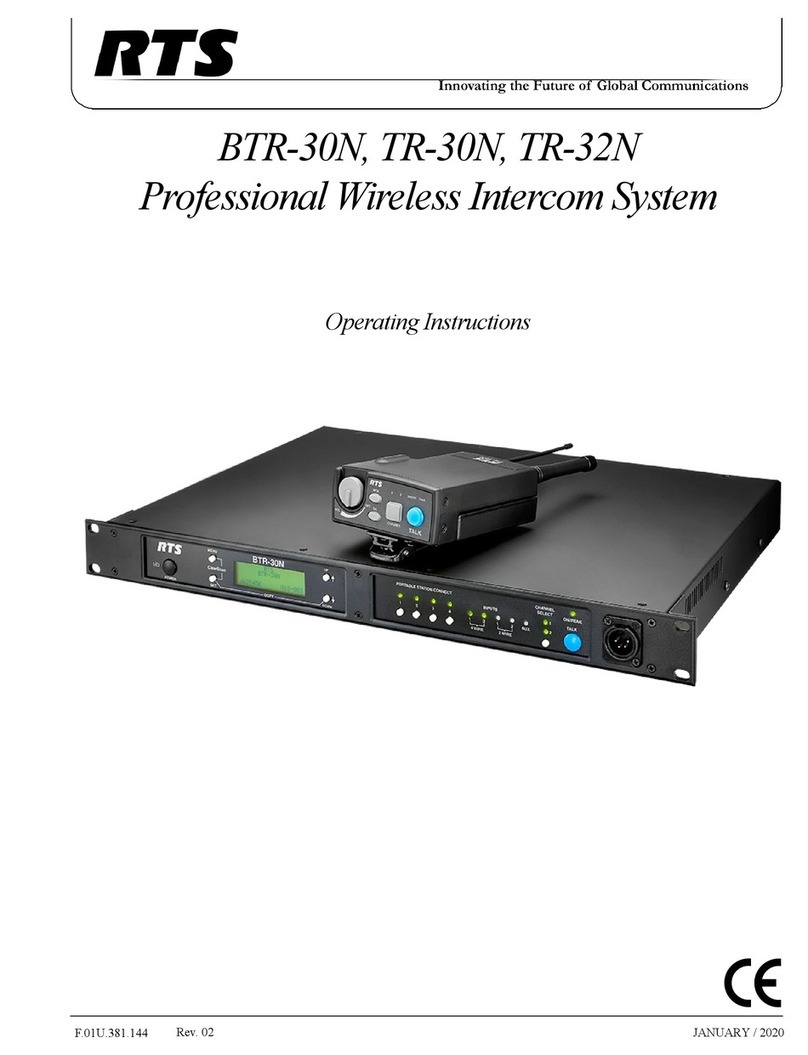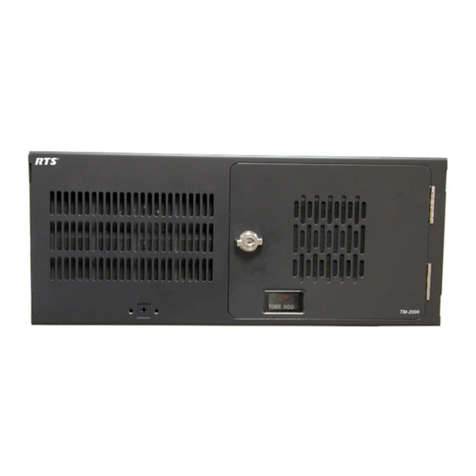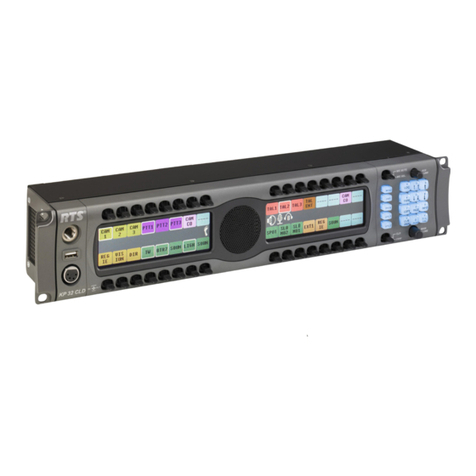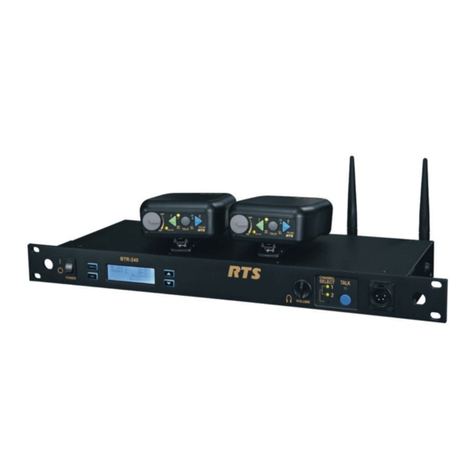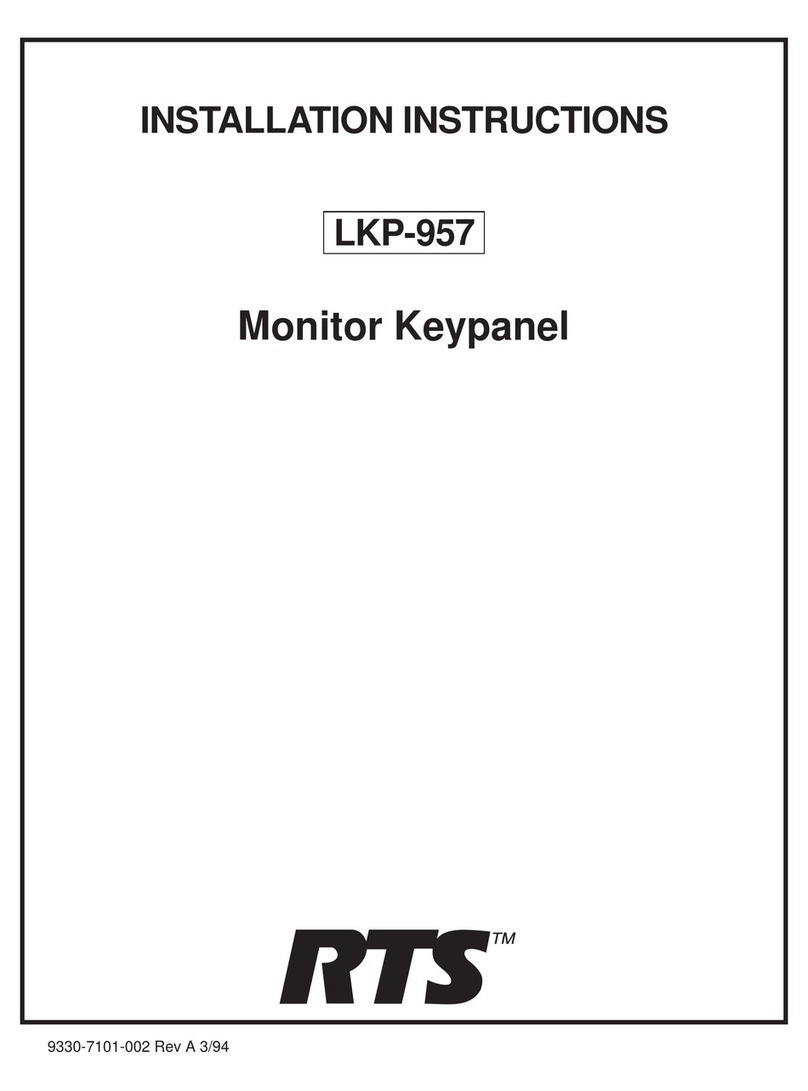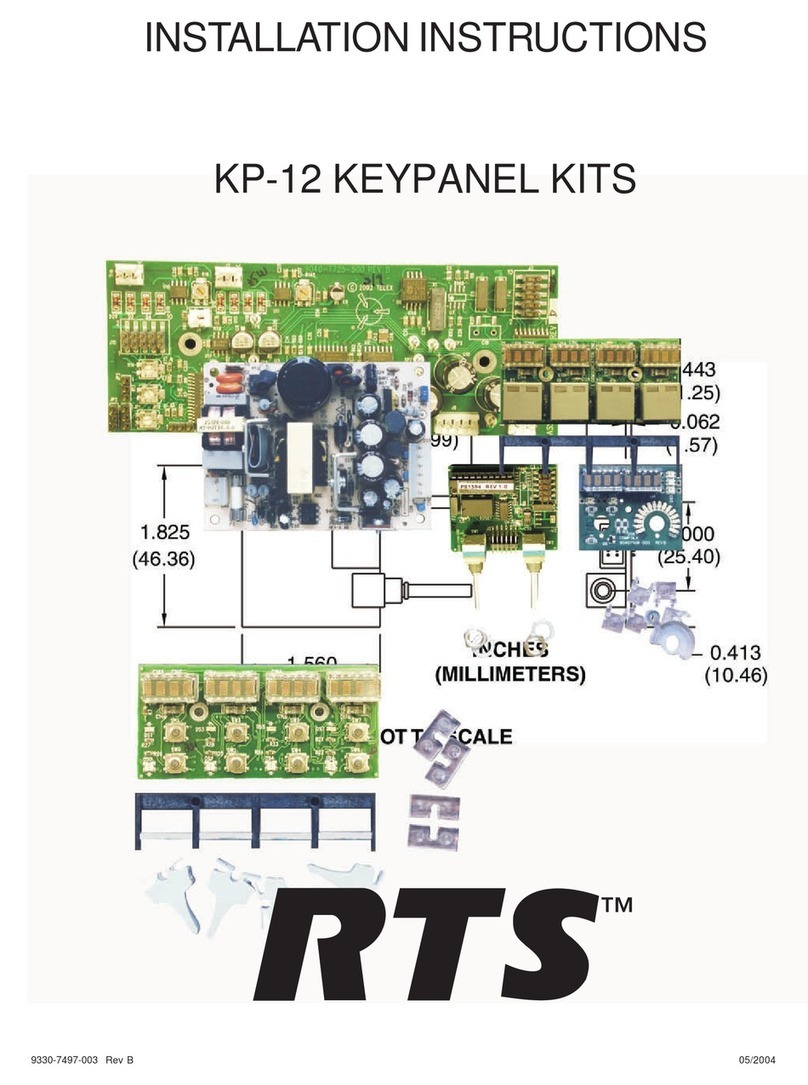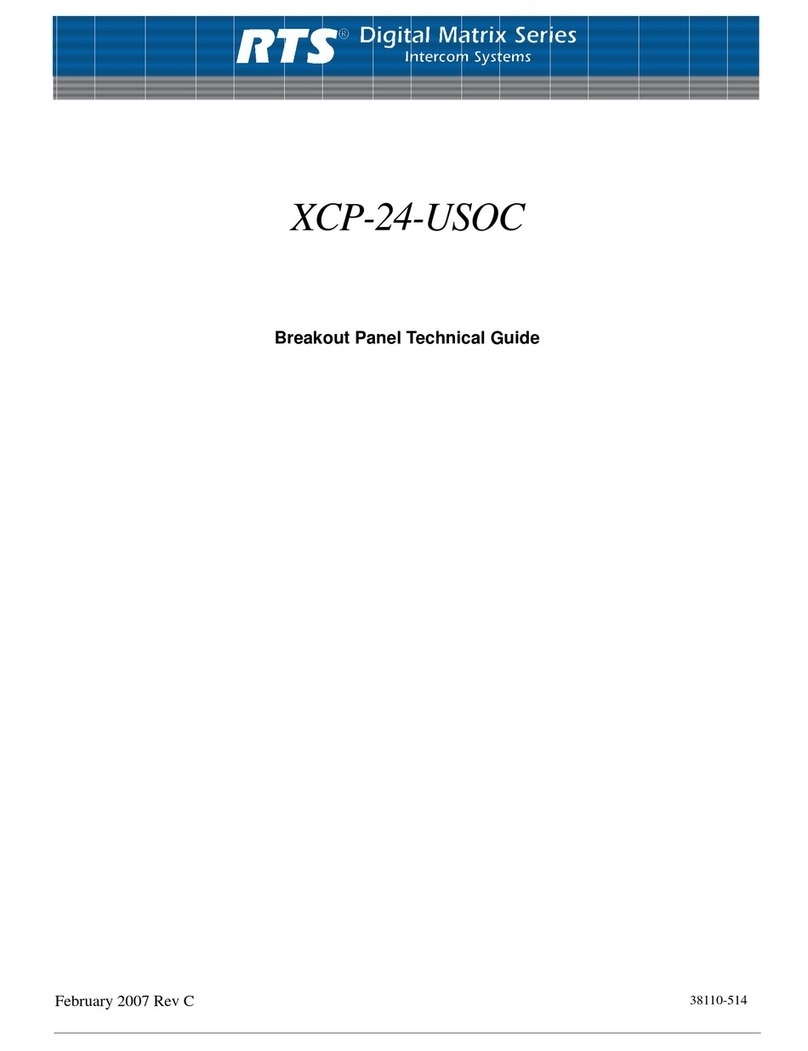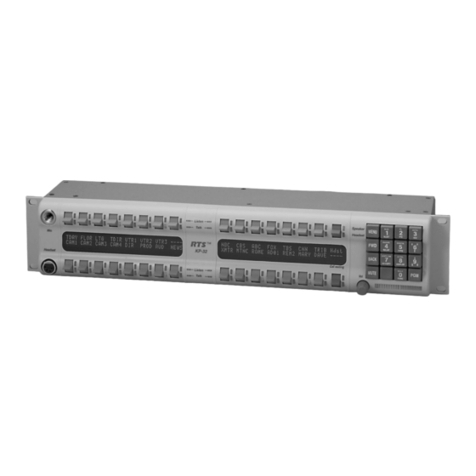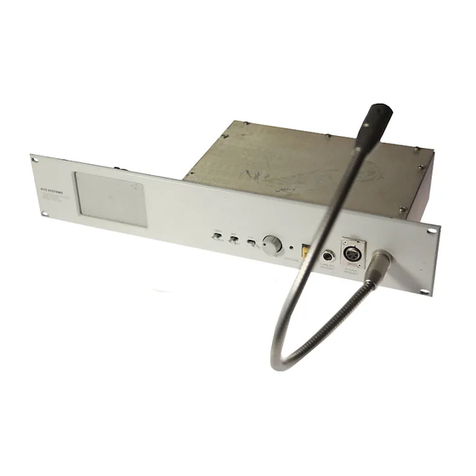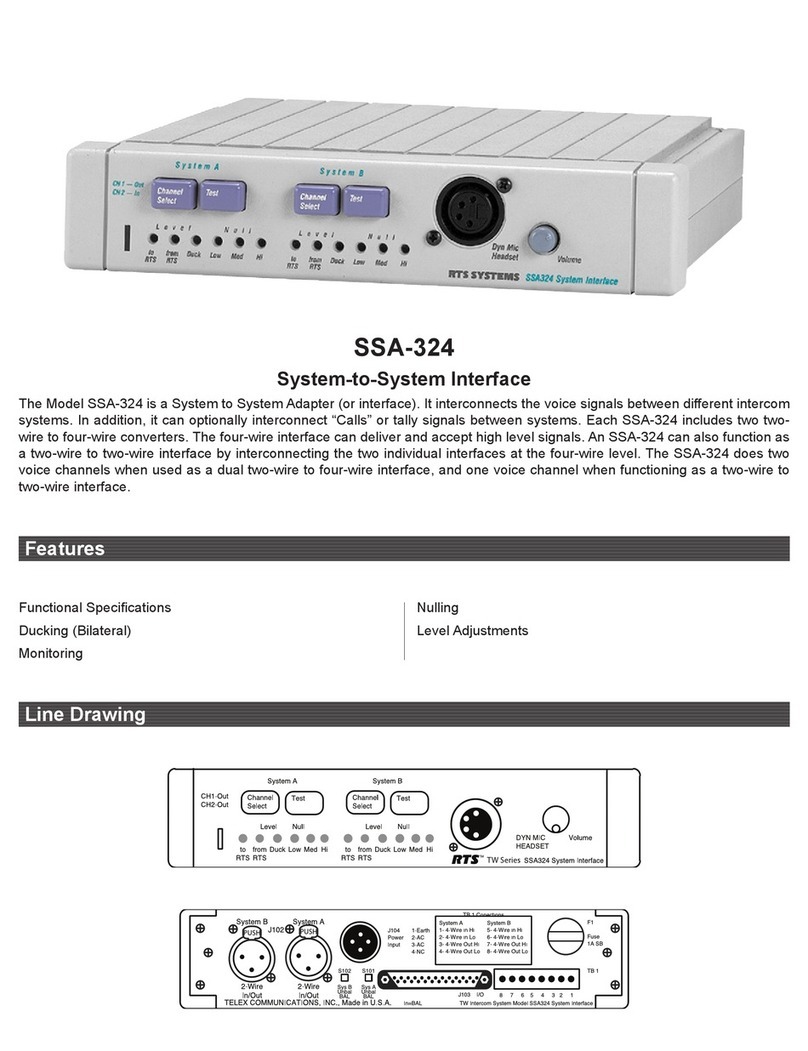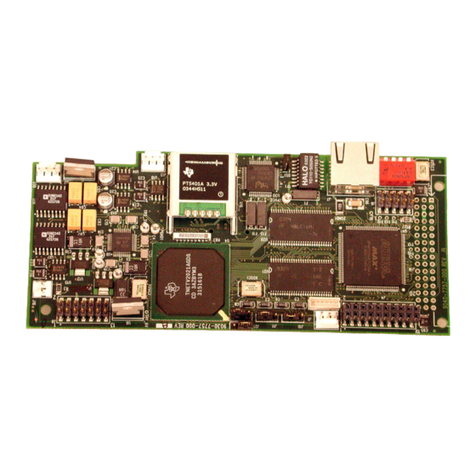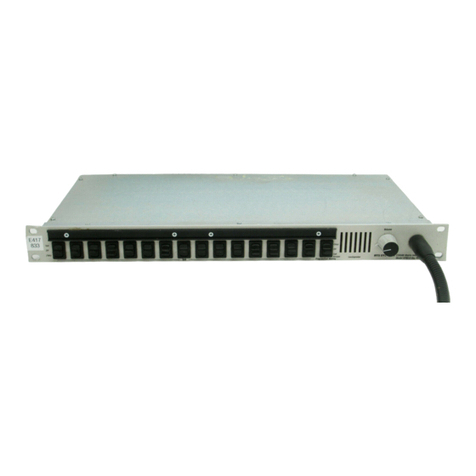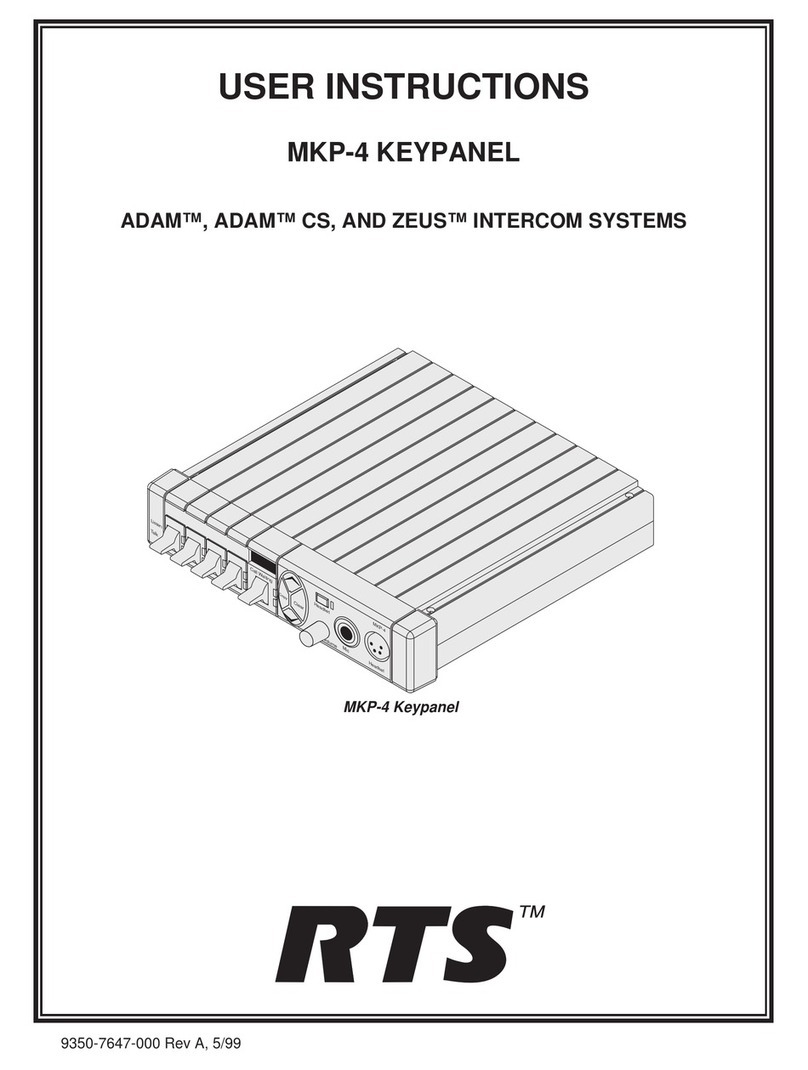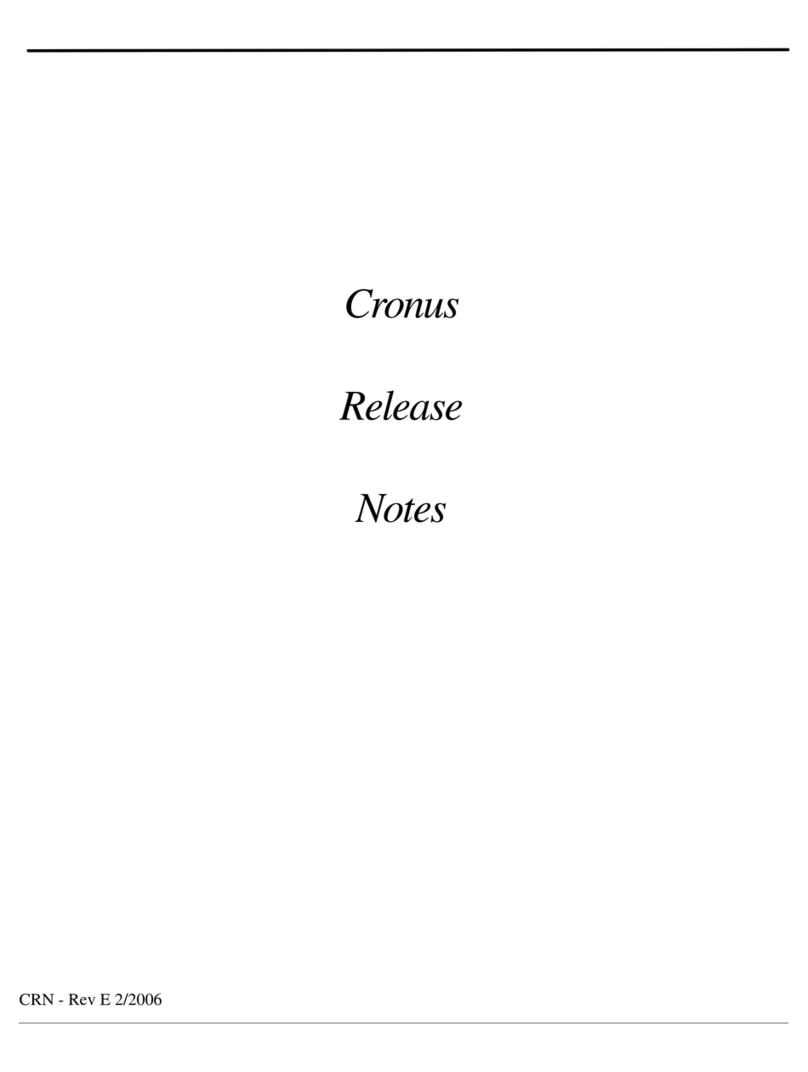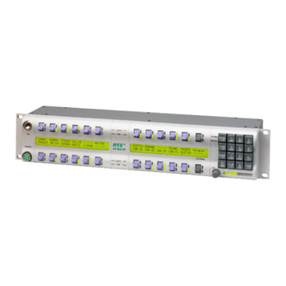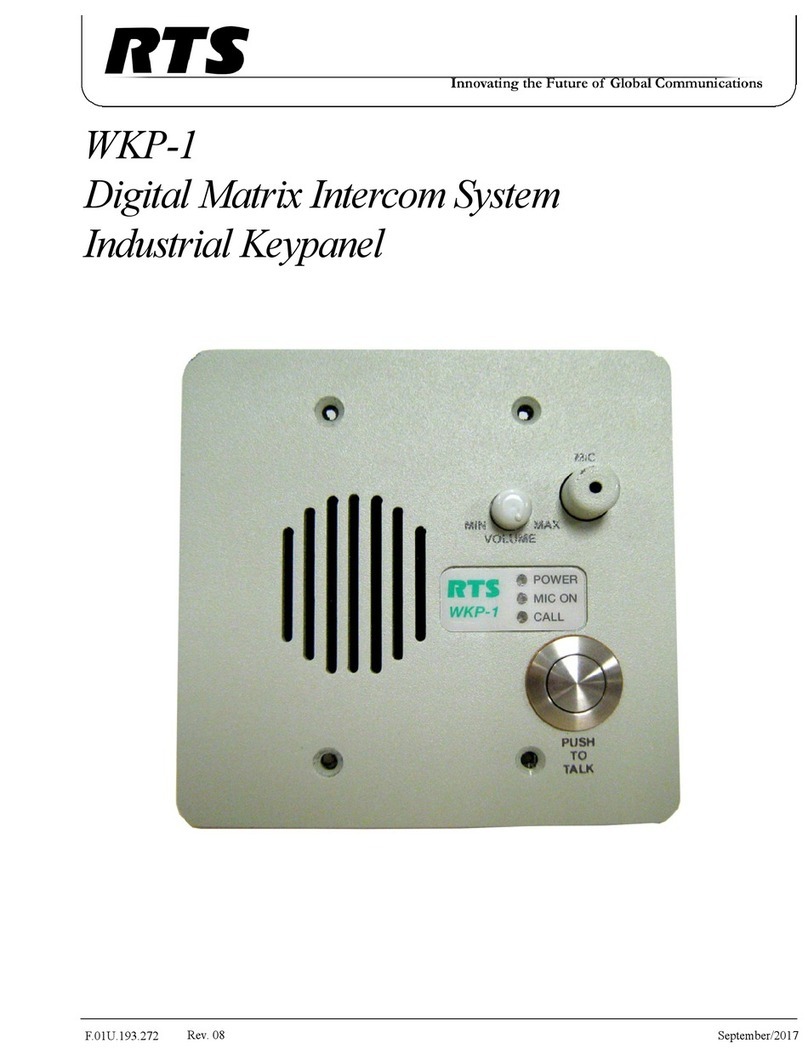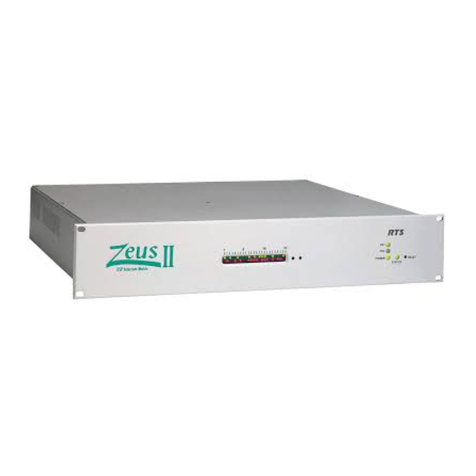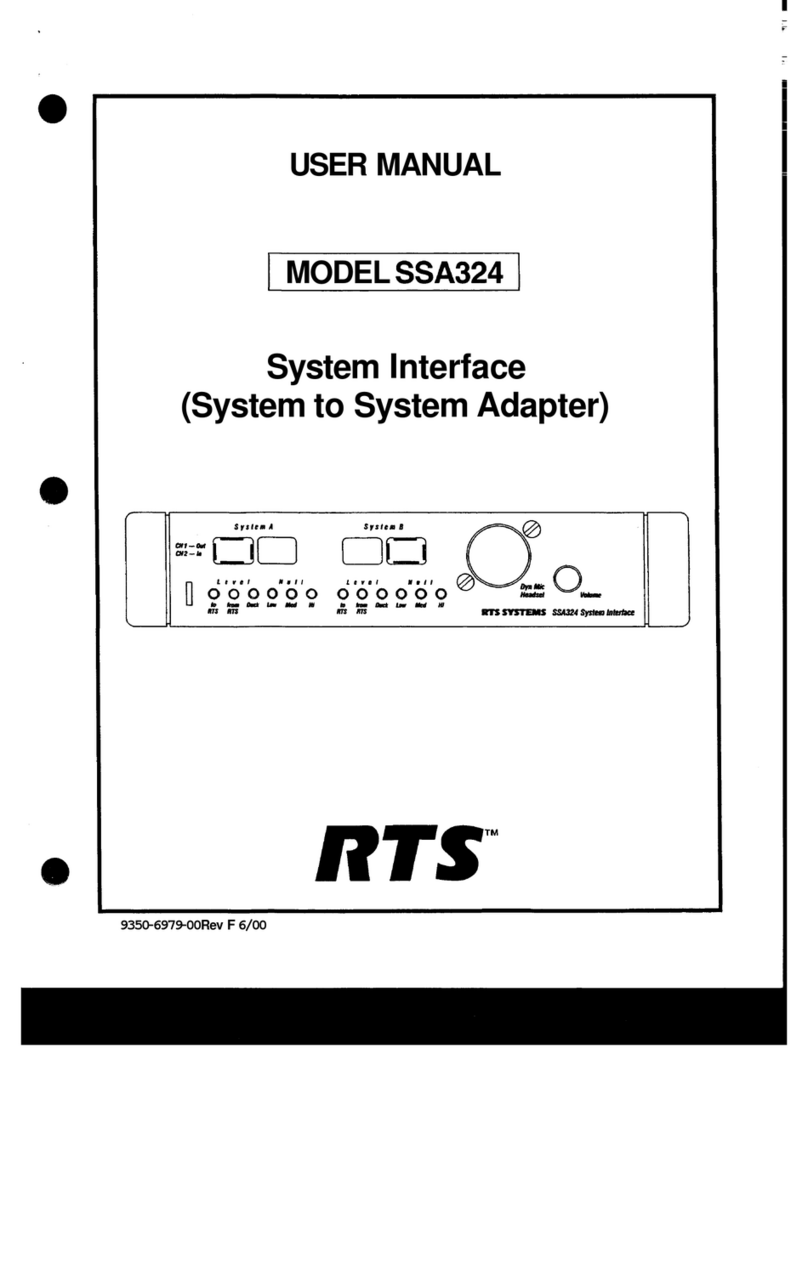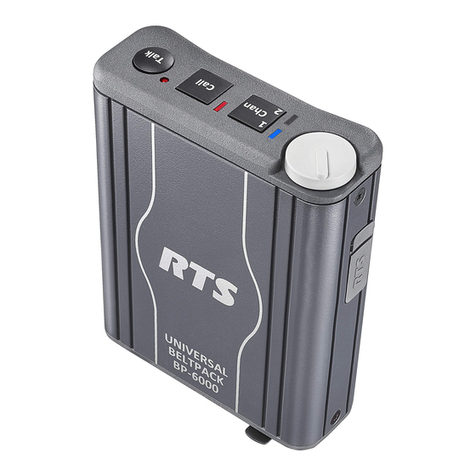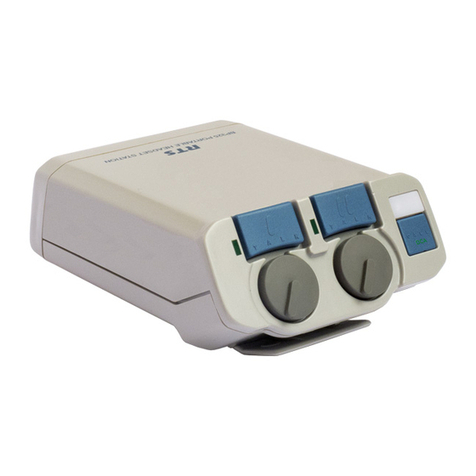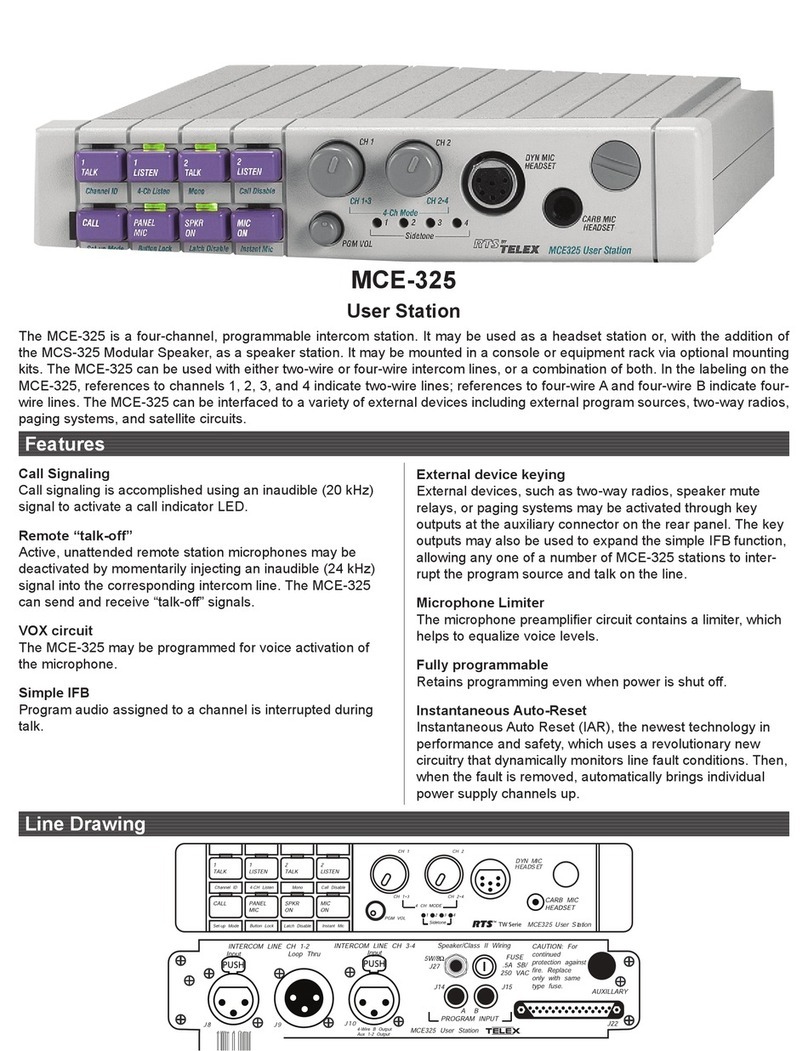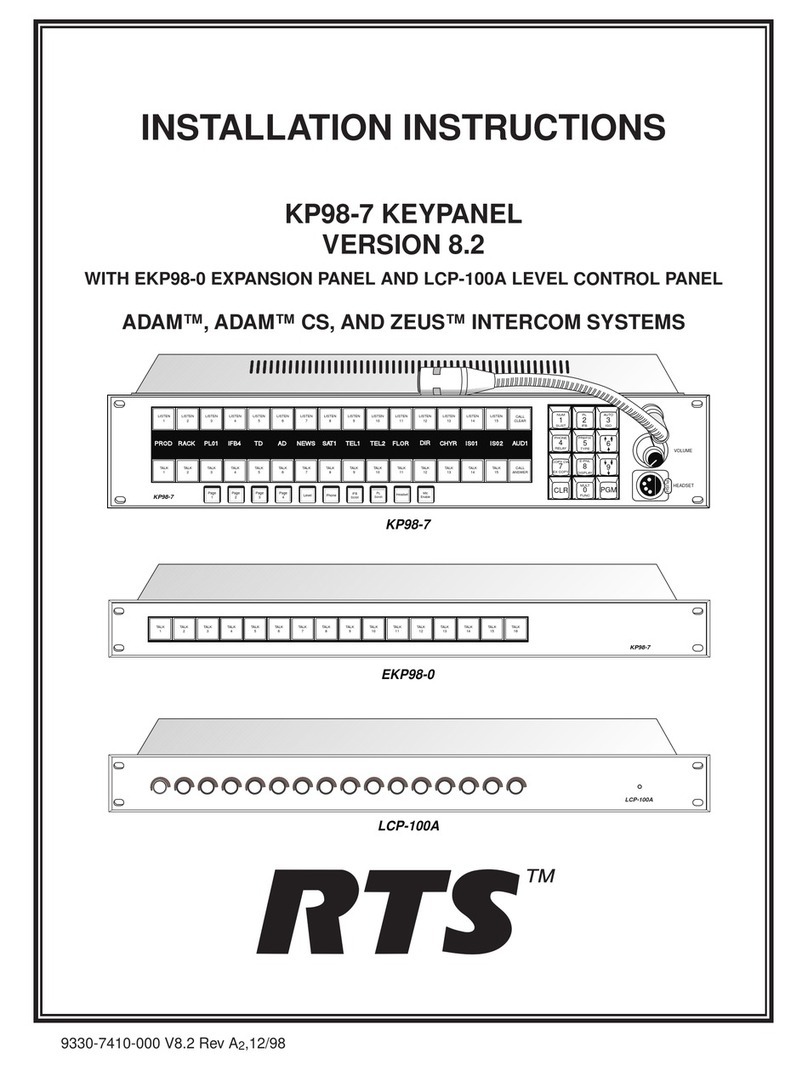
PROPRIETARY NOTICE
The RTSTM product information and design disclosed
herein were originated by and are the property of Telex
Communications, Inc. Telex reserves all patent,
proprietary design, manufacturing, reproduction, use and
sales rights thereto, and to any article disclosed therein,
except to the extent rights are expressly granted to others.
COPYRIGHT NOTICE
Copyright 1995 by Telex Communications, Inc.. All
rights reserved. Reproduction in whole or in part without
prior written permission from Telex is prohibited.
UNPACKING AND INSPECTION
Immediately upon receipt of the equipment, inspect the
shipping container and the contents carefully for any
discrepancies or damage. Should there be any, notify the
freight company and the dealer at once.
WARRANTY INFORMATION
RTSTM products are warranted by Telex Communications,
Inc. to be free from defects in materials and workmanship
for a period of three years from the date of sale.
The sole obligation of Telex during the warranty period is
to provide, without charge, parts and labor necessary to
remedy covered defects appearing in products returned
prepaid to Telex. This warranty does not cover any defect,
malfunction or failure caused beyond the control of Telex,
including unreasonable or negligent operation, abuse,
accident, failure to follow instructions in the Service
Manual or the User Manual, defective or improper
associated equipment, attempts at modification and repair
not authorized by Telex, and shipping damage.
To obtain warranty service, follow the procedures entitled
"Procedure For Returns" and "Shipping to Manufacturer
for Repair or Adjustment".
This warranty is the sole and exclusive express warranty
given with respect to RTSTM products. It is the
responsibility of the user to determine before purchase that
this product is suitable for the user's intended purpose.
ANY AND ALL IMPLIED WARRANTIES,
INCLUDING THE IMPLIED WARRANTY OF
MERCHANTABILITY ARE LIMITED TO THE
DURATION OF THIS EXPRESS LIMITED
WARRANTY.
NEITHER TELEX NOR THE DEALER WHO
SELLS RTSTM PRODUCTS IS LIABLE FOR
INCIDENTAL OR CONSEQUENTIAL DAMAGES
OF ANY KIND.
CUSTOMER SUPPORT
Technical questions should be directed to:
Customer Service Department
RTS/Telex,
2550 Hollywood Way, Suite 207
Burbank, CA 91505 U.S.A.
Telephone: (818) 566-6700
Fax: (818) 843-7953
RETURN SHIPPING INSTRUCTIONS
PROCEDURE FOR RETURNS
If a repair is necessary, contact the dealer where this unit
was purchased.
If repair through the dealer is not possible, obtain a
RETURN AUTHORIZATION from:
Customer Service Department
Telex Communications, Inc.
Telephone: (800) 828-6107
Fax: (800) 323-0498
DO NOT RETURN ANY EQUIPMENT DIRECTLY
TO THE FACTORY WITHOUT FIRST
OBTAINING A RETURN AUTHORIZATION.
Be prepared to provide the company name, address,
phone number, a person to contact regarding the repair,
the type and quantity of equipment, a description of the
problem and the serial number(s).
SHIPPING TO MANUFACTURER FOR REPAIR OR
ADJUSTMENT
All shipments of RTSTM products should be made via
United Parcel Service or the best available shipper,
prepaid. The equipment should be shipped in the original
packing carton; if that is not available, use any suitable
container that is rigid and of adequate size. If a substitute
container is used, the equipment should be wrapped in
paper and surrounded with at least four inches of
excelsior or similar shock-absorbing material. All
shipments must be sent to the following address and must
include the Return Authorization.
Factory Service Department
Telex Communications, Incorporated
West 1st Street
Blue Earth, MN 56013 U.S.A.
Upon completion of any repair the equipment will be
returned via United Parcel Service or specified shipper
collect.
RM-325 User Manual 2
